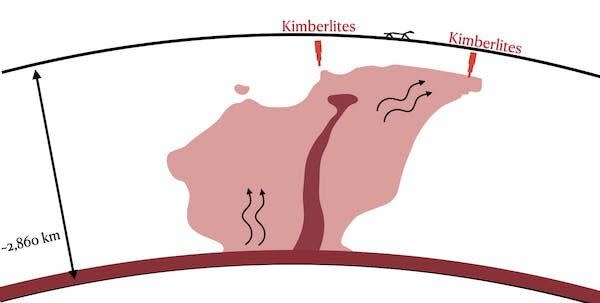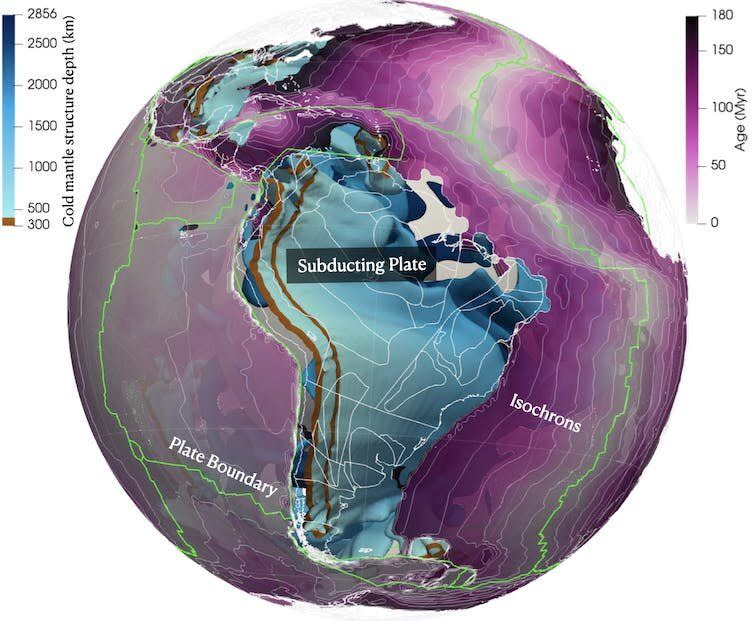Supercomputers Reveal Earth’s Incredible Secret Diamond Engine

"Hearst Magazines and Yahoo may earn commission or revenue on some items through these links."
Diamonds are formed around 100 miles below the Earth’s crust over billions of years, eventually pushing to the surface in kimberlite eruptions.
For decades, scientists have puzzled over what geologic engine is at work that brings heat from the Earth’s core to cause these eruptions.
A new study uses geodynamic models designed by supercomputers that accurately captured kimberlite eruption activity from the past 200 million years.
Diamonds primarily need three things to form: pressure, heat, and lots of time. Those three ingredients can be easily found in the Earth’s mantle—the goopy, extra hot geologic soup that separates the planet’s core from its crust. But if these precious stones form some 100 miles below the surface, how exactly do they show up in mines and jewelry stores across the globe?
For decades, scientists have known that volcanic eruptions of an igneous rock known as kimberlite can contain diamonds in their rock matrix, and such kimberlite hot spots can be found in South Africa, the northeastern U.S., and Siberia, among other places. So while this volcanic phenomena essentially burps up diamonds, what is the geologic engine behind those eruptions?
Researchers from the University of Wollongong Australia analyzed the past billion years of Earth’s geologic movement to understand the inner machinations of kimberlite in the Earth’s mantle. The team discovered structures called “pillars of heat,”—stretching 2,900 kilometers (1800 miles) below the Earth’s surface and rooted right above the planet’s core—an idea first explored in the 1970s. The results were published last month in the journal Nature Geoscience.
“We calculated the movements of heat upward from the core and discovered that broad mantle upwellings, or ‘pillars of heat’, connect the very deep Earth to the surface,” the study authors wrote in a statement. “Our modeling shows these pillars supply heat underneath kimberlites, and they explain most kimberlite eruptions over the past 200 million years.”
The researchers used supercomputers at the National Computational Infrastructure in Canberra, Australia (which in April aided researchers in exploring the mysteries of the Earth’s inner core) to create geodynamic models to capture accurate movement of plate tectonics as well as known kimberlite eruptions across the globe.

The models accurately accounted for eruptions in Africa, Russia, and Brazil and partially explained known kimberlite eruptions in the U.S. and Canada. Researchers chalk up this North American discrepancy to the possibility that some kimberlite eruptions were fueled by a process known as “plate subduction” rather than these heat pillars.
On the flip side of confirming known kimberlite eruptions, the model also revealed potentially undiscovered kimberlite eruptions in East Antarctica and the Yilgarn Craton of Western Australia.

Using hyper-accurate supercomputer simulations of the Earth’s geologic movements could have massive repercussions for industrial mining. Such geodynamic models could help highlight diamond-filled areas and the locations of future kimberlite eruptions, but could also help scientists pinpoint cobalt and nickel—minerals needed to power humanity’s green energy transition—as well as rare earth metals.
Understanding the geologic engine beneath our feet helps illuminate the planet’s distant past, but it could help us ensure a future for us humans as well.
You Might Also Like

